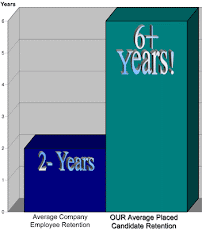By STYLE CHRISTINA BINKLEY
THE
January 11, 2008
SMART DRESSING INVOLVES sending subliminal messages, particularly when a serious job is at stake. This is something that even high-ranking business leaders can underestimate.
In commerce, unlike in
I recently suggested to Dorothy Waldt, a New York executive recruiter, that CEOs and other high-level job candidates must know what to wear by that stage in their careers. "You'd think!" she said when she had stopped laughing.
"People don't understand the messages that their clothes send," says Ms. Waldt, a recruiter with CTPartners. Women sometimes don't realize how often a tight shirt or a low neckline comes across as seductive. People who meet them are likely to assume the sexual innuendo is intentional.
It's harder for men to goof, but they do -- for instance, by being sloppy with untucked or wrinkled shirts or wearing beeping sports watches to staid business events. Sagging socks, dangling earrings and obvious designer logos all send messages that register with the people on the other side of the table.
To complicate matters, things aren't as cut-and-dried as they were in the days of strict blue-collar and white-collar work uniforms. Following the old dress-for-success rules, with ties and starched white shirts, would create suspicion and awkwardness at Google's dressed-down headquarters today. Executive job seekers have to study more than the balance sheet these days -- they have to suss out a company's fashion ethos. Candidates may want to call the hiring manager's assistant or ask a recruiter about the appropriate look before they show up for the interview.
Ms. Waldt recalls a candidate sent to interview with a retailer that had a casual culture. Unfortunately for him, he dressed up. "The clothes that he was wearing were so polar-opposite of what the company did that they thought he just didn't get them at all," says Ms. Waldt. They never bothered to interview him. "He sat in a holding pen all day and flew home."
Possibly, that job candidate wouldn't have wanted to work at a company that dismissed him so summarily. Yet boards of directors routinely size up executive-level candidates by inspecting the clues in their clothes. Hal Reiter, an executive recruiter and chairman and chief executive of Herbert Mines Associates, recalls meeting with a CEO candidate for a mainstream retailer.
The man, chief financial officer of a major big-box retailer, showed up in a navy-blue necktie with a gold circular symbol surrounded by what looked like leaves and red blotches. Upon closer inspection, Mr. Reiter discovered that the red was blood dripping from a crown of thorns. The tie isn't the main reason he didn't get the job, but the distractingly graphic religious imagery didn't help.
Mr. Reiter, who leans toward Brioni suits himself, rails about "horrible footwear -- unshined, rubber soles, acrylic socks" that he sees frequently. He isn't shy about dressing people down, according to Larry McClure, senior vice president of human resources for Liz Claiborne Inc., who once hired Mr. Reiter to locate a senior-level recruit. In the car on their way to the interview in
"I guess I never figured that people would look at my socks," says Mr. McClure, who has since invested in new ones, as well as Donald Pliner shoes.
Mr. Reiter's parting shot for aspiring executives at businesses with a formal ethos: "It takes $1,000 to buy a suit that looks good." And when you wear it, "you can't look like it's the first time, either."
Job interviewers don't miss much, says Ann Marie Sabath, a business etiquette consultant and author of One Minute Manners. She is relentless about getting interview clothes right. Her advice includes ironing creases into your pants, investing in a good watch, and wearing a collar. "A collar projects authority," says Ms. Sabath, who has consulted for Citigroup, Fidelity Investments and Procter & Gamble. Her company, At Ease Inc., operates a hotline for business-etiquette emergencies.
Ms. Sabath advises men to have their shirts professionally laundered and to button one or two jacket buttons when standing in order to look neat and well-assembled. These are details that can boost or diminish a career without leaving a trace in the memory of either party.
David Goldhill, president and chief executive of the Game Show Network, has been overhauling the television network's senior management lately. He highlighted the subliminal nature of the interviewing process when I asked if his decisions have been influenced by what a job candidate or subordinate wore, for better or for worse. "Probably," he responded, "but I'm not aware of it."
Dressing to Impress:
- Men should wear no more that three accessories (Belt, Wedding band, match)
- Iron your shirts - even the no-iron ones
- Keep a sharp crease in your pants
- The higher a woman climbs the corporate ladder, the more light-colored suits she can and should wear (to be less intimidating)
- The definition of business casual; one notch down from business normal
- Where jeans are part of the uniform, don't wear the ones you mow the lawn in - stick with the classic look that rests at the waist, not the low-rise look.
- Dress for the position you want, not for the one you currently have.
- Match the culture of the industry; call ahead or have your recruiter find out the office's style.
- When in doubt about a jacket, tie or other item, bring one along. You can take it off, but you can't put it on if you don't have it.
















No comments:
Post a Comment